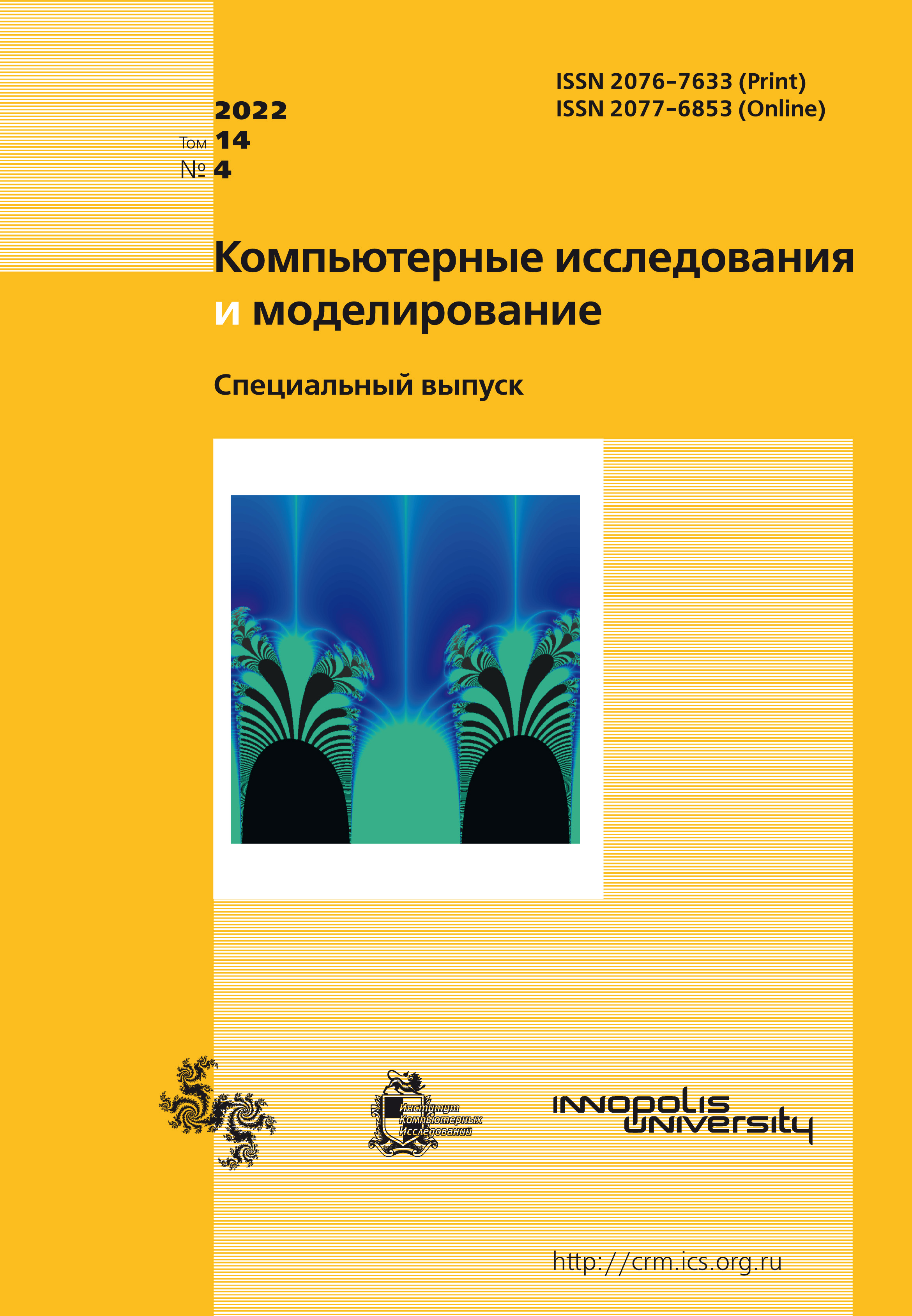All issues
- 2024 Vol. 16
- Issue 1 (special issue)
- 2023 Vol. 15
- 2022 Vol. 14
- 2021 Vol. 13
- 2020 Vol. 12
- 2019 Vol. 11
- 2018 Vol. 10
- 2017 Vol. 9
- 2016 Vol. 8
- 2015 Vol. 7
- 2014 Vol. 6
- 2013 Vol. 5
- 2012 Vol. 4
- 2011 Vol. 3
- 2010 Vol. 2
- 2009 Vol. 1
Simulation of unsteady structure of flow over descent module in the Martian atmosphere conditions
 pdf (5262K)
pdf (5262K)
The article presents the results of numerical modeling of the vortex spatial non-stationary motion of the medium arising near the lateral and bottom surfaces of the descent module during its movement in the atmosphere of Mars. The numerical study was performed for the high-speed streamline regime at various angles of attack. Mathematical modeling was carried out on the basis of the Navier – Stokes model and the model of equilibrium chemical reactions for the Martian atmosphere gas. The simulation results showed that under the considered conditions of the descent module motion, a non-stationary flow with a pronounced vortex character is realized near its lateral and bottom surfaces. Numerical calculations indicate that, depending on the angle of attack, the nonstationarity and vortex nature of the flow can manifest itself both on the entire lateral and bottom surfaces of the module, and, partially, on their leeward side. For various angles of attack, pictures of the vortex structure of the flow near the surface of the descent vehicle and in its near wake are presented, as well as pictures of the gas-dynamic parameters fields. The non-stationary nature of the flow is confirmed by the presented time dependences of the gas-dynamic parameters of the flow at various points on the module surface. The carried out parametric calculations made it possible to determine the dependence of the aerodynamic characteristics of the descent module on the angle of attack. Mathematical modeling is carried out on the basis of the conservative numerical method of fluxes, which is a finitevolume method based on a finite-difference writing of the conservation laws of additive characteristics of the medium using «upwind» approximations of stream variables. To simulate the complex vortex structure of the flow over descent module, the nonuniform computational grids are used, including up to 30 million finite volumes with exponential thickening to the surface, which made it possible to reveal small-scale vortex formations. Numerical investigations were carried out on the basis of the developed software package based on parallel algorithms of the used numerical method and implemented on modern multiprocessor computer systems. The results of numerical simulation presented in the article were obtained using up to two thousand computing cores of a multiprocessor complex.
Indexed in Scopus
Full-text version of the journal is also available on the web site of the scientific electronic library eLIBRARY.RU
The journal is included in the Russian Science Citation Index
The journal is included in the RSCI
International Interdisciplinary Conference "Mathematics. Computing. Education"






